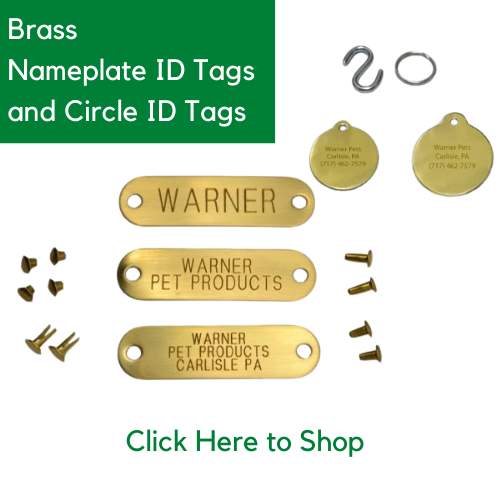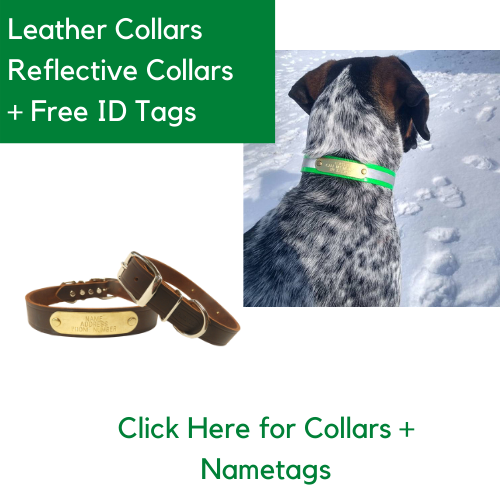Posted by Warner Pet Products on 13th Jan 2021
What Should You Do When Your Dog Runs Away?
What Should You Do When Your Pet Dog Runs Away?
Whether you have a fully grown dog, or a small puppy that has just learned how to bolt out of the door when you aren't watching - there is always a risk of your pet running away. In our experience, nearly all pet owners have had some experience of their pet escaping their supervision and running off. 1/3 pets will get lost at some point in their lifetime. So it is best to be prepared for when it happens, but also know how to prevent it from happening in the first place!
In this post, we'll talk about what do to in different situations. Also, we'll talk about preventative action you can take to make sure your dog doesn't run away, and also increase the likelihood of your dog coming back when they do run away.
Dog Safety Measures All Owners Should Take
Having your dog run away is not something you can control 100% of the time. Dogs a nimble, very fast, and even cunning sometimes! If they want to run away, they will likely get away at some point. Even if you do everything in your power to prevent it.
Having safety measures in place allows you to control the things you can, so in the event of your dog running away or getting lost, at least you do have some ways your dog will be able to get back to you.
1. Name Plates For Your Dog Collar
When your dog runs away, there is always a high likelihood that someone will find them sooner or later. Knowing this, you need to make sure that anyone who finds your lost pet can easily contact you. Some dog owners think having a microchip is enough, and that can be the case most times. But in order to read microchip data, you need to go to the vet! So it isn't a practical option, but a good safeguard. You need a primary method of letting people know who the dog's owner is, and how to contact you!
The best way to help your dog get found is to make sure they are wearing a name plate dog collar. Dog collars come in many, many shapes and forms but arguably the most important part is to make sure they have an ID-Tag on them.
When you order a dog collar from Warner Pet Products, we always include a custom engraved pet ID tag. Every day, we make many tags for dog collars. 99% of the time, we engrave the dog's name, the owner's address, as well as a phone number.
Imagine if you find a lost dog, and it has the owner's contact info on the collar! Returning the dog to the rightful owner safely is easy! You can call them and tell them to pick up the dog, or you can deliver the lost dog to the address where the owner lives!
At the end of the day, having a name plate dog collar on your dog all the time is the best way to ensure they will be safe and able to find you even if they run away for a period of time.
2. Obedience and Recall Training
Dog training doesn't always have to be a big commitment! This really just comes down to enough training to make your dog come to you when you tell them to! You don't have to hire a dog training to get this type of training either - this is something you can do at home (with some treats of course!)
The best way to get your dog to respond to your "Come Here" command is to first get some training treats - these are small treats that are the perfect size for a bite-sized reward, but not enough to fill your dog up.
You can do this by calling your dog with you command of choice, then giving them a treat as soon as they come to you. Done consistently and over the course of a few weeks, your dog will learn that coming to you results in treats for them! Of course, you don't always have to reward your dog but every now and then it helps to reward them for this behavior. Read more on dog training at this blog article: Training Your Dog To Use A Potty Bell
This type of training pays off when your dog wanders out of sight, and you can't simply just go grab them. A dog that knows its name and a "Come Here" command will simply come running to you when you tell them to! However, if you wait until your dog runs away, it'll be too late! We recommend this training from an early age. Once your dog learns this command, they won't ever forget it.
Now, we'll talk about what to do when your dog runs away and how to find them!
Case 1: Your Pet Didn't Go Far, Under Your Supervision
In most cases, your dog might only just run over to the neighbors yard, or a few doors down. Especially for people who don't have fenced-in yards, this is a possibility. Maybe you let your dog off the leash or tie-off cord to play some fetch! But then, your dog saw a bird and immediately bolted off!
When this happens, you can usually see exactly where your dog went so you can easily chase after it. And since you're in a familiar location for you and your pet, your dog isn't likely to continue to wander after it loses interest in what caused it to bolt off in the first place.
Even if you're at a park or on a hike in the country, getting your dog back when they have only run off a short distance from you is straightforward.
In these cases, your likelihood of getting your dog back is very high, since 1) you aren't far from home and 2) your dog likely didn't leave your line of site.
So what do you do when your dog ran away, but didn't go far? The answer is simple - you will need to chase after it and catch him/her before she wanders even further or gets lost. There isn't really many other options in this scenario - you will need to catch your dog yourself, or with the help of your loved ones and/or neighbors.
The key in these situations is to act quickly! Don't just assume your dog will wander back in time. By waiting, you're putting your dog in more danger. It can wander off further away, and put itself in danger in so many different ways (running into private property, onto a main road, into a river, etc.)
Preventing your Dog from getting away under your supervision
The first thing you can do is ensure that anytime your dog is off the leash, that you are watching them and paying attention. Even turning your attention away for 30 seconds is long enough for your dog to wander off. When this happens you'll be left searching for your dog who might be nearby, but not in your line of sight.
Another preventative measure is to only let your dog off leash in enclosed, fenced-in, spaces. This is the best way to make sure your dog can run around free without worrying about them getting lost. Of course, if your yard is fenced in, you'll need to periodically check it for breaches and holes caused by wild animals.
Case 2: Your Dog Ran Away, and You Weren't Able to Find Him/Her By Searching Nearby
This is the worst-case scenario for pet owners, as you have no idea where your dog could be. Thinking of your dog, lost outdoors for a couple hours, overnight, or even a few days is a terrifying thought. After all, our dogs are our family - you wouldn't want to think of your own child or loved one lost outdoors for ANY amount of time
So what do you do in this situation?
First, this depends on where you were when you last had your dog with you? If you were at your house or in your neighborhood, the best bet will be contacting neighbors close to where you last saw your dog. Whether you can knock on their doors or call them, it's best to try this option as soon as you can.
Another option is to drive around your neighborhood and look for your dog. Often, dog's will be wandering along the road, so you may get lucky and find them. When looking for your dog, always take one of your dogs favorite squeaky toys, as that sort of familiar sound will draw them out! In addition to calling out their name, which will alert them to the fact that their owner is out nearby.
Another option is to call local dog pounds, kennels, and veteranarians. These are the places where people will drop off lost dogs, and a great place to check in on over the next couple days and weeks if you don't find your pet immediately.
What do you do if you are on a hike, or on a vacation and your dog gets lost? Honestly, there is not much you can do. If your dog doesn't have a collar with an ID tag on it, people will not be able to contact you even if they find your dog. Being powerless in this situation and knowing your dog is out there, alone and possibly in danger, is heartbreaking. This is why we recommend everyone should have a nameplate dog collar!
With a collar that has an nameplate ID tag, people are able to easily find/contact you! Every dog should have a collar like this, even if they are mostly spending their time in doors. Accidents happen, and you never know when your dog might slip out the door.
Keeping our pets safe is the number one priority for dog owners. Whether you have a working dog, a big breed or small breed, or an indoor dog, you need to have a way for people to contact you in the event they find your dog.
Hopefully this article gave you some insight in to why you need a nameplate ID tag for your dog!


